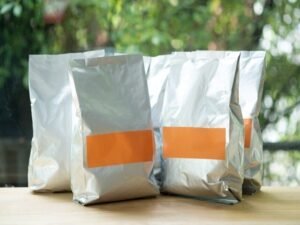Sleeping bags are essential companions for any outdoor adventure, providing warmth and comfort in the great outdoors. However, after multiple camping trips or backpacking excursions, your sleeping bag can accumulate dirt, body oils, and odors, compromising its performance and hygiene. Proper cleaning is crucial to maintain the insulating properties and extend the lifespan of your sleeping bag.
In this comprehensive guide, we’ll explore the best practices for washing a sleeping bag, addressing different insulation types, cleaning methods, and essential care tips to keep your sleeping bag in top condition.
Insulation Types
Before delving into the washing process, it’s essential to understand the different insulation types found in sleeping bags, as each type requires specific cleaning methods.
Down Insulation
Down insulation, derived from the plumage of geese or ducks, is highly effective at trapping body heat and providing an exceptional warmth-to-weight ratio. However, down loses its insulating properties when wet and requires special care during washing.
Synthetic Insulation
Synthetic insulation, such as polyester or hollow-fiber filaments, is a popular alternative to down. It is more affordable, retains its insulating properties when wet, and is generally easier to clean and maintain.
Preparing for Washing
Proper preparation is key to ensuring a successful and thorough cleaning of your sleeping bag. Follow these steps:
- Check the Label: Carefully read the manufacturer’s care instructions on the label or in the user manual. Different sleeping bags may have specific washing guidelines based on the insulation type and fabric.
- Remove Loose Debris: Before washing, shake out any loose dirt, leaves, or debris from the sleeping bag. You can also use a soft-bristled brush or a handheld vacuum cleaner to remove surface dirt.
- Sort by Insulation Type: If washing multiple sleeping bags, sort them by insulation type (down or synthetic) to ensure proper cleaning methods are applied.
- Choose the Right Detergent: Use a mild, non-detergent soap or a specialized down cleaner for sleeping bags. For synthetic bags, you can use a mild liquid detergent or a dedicated synthetic cleaner.

Washing Down Sleeping Bags
Down sleeping bags require special care to maintain the loft and insulating properties of the down feathers. Here’s how to wash a down sleeping bag:
- Use a Front-Loading Washing Machine: Down sleeping bags should be washed in a front-loading washing machine or a commercial-grade machine designed for cleaning down items. Top-loading machines can be too harsh on the delicate down feathers.
- Gentle Cycle and Warm Water: Select a gentle or delicate cycle and use warm water (around 30°C to 40°C). Avoid hot water, as it can cause the down to clump and lose its loft.
- Use a Down Cleaner: Add a specialized down cleaner or a mild, non-detergent soap to the washing machine. Follow the manufacturer’s instructions for the appropriate amount.
- Rinse Thoroughly: Ensure your sleeping bag is thoroughly rinsed to remove all traces of soap or detergent, as residue can reduce the down’s insulating properties.
- Dry Properly: After washing, it’s crucial to dry your down sleeping bag properly to restore its loft and warmth. Use a large, front-loading dryer on a low heat setting, and add a few clean tennis balls or dryer balls to help break up any clumps and fluff them down.
Washing Synthetic Sleeping Bags
Synthetic sleeping bags are generally easier to clean and maintain than down bags. Follow these steps:
- Washing Machine or Handwash: You can wash synthetic sleeping bags in a front-loading or top-loading washing machine on a gentle cycle, or handwash them in a bathtub or large sink.
- Mild Detergent: Use a mild liquid detergent or a specialized synthetic cleaner. Avoid using harsh detergents or bleach, as they can damage the synthetic insulation.
- Warm Water: Use warm water (around 30°C to 40°C) for washing synthetic sleeping bags.
- Rinse Thoroughly: Ensure all soap or detergent residue is thoroughly rinsed out to prevent any buildup or odor.
- Drying Options: For drying, you can use a front-loading dryer on a low heat setting or air-dry your synthetic sleeping bag in a well-ventilated area, ensuring it’s completely dry before storing.

Spot Cleaning and Deodorizing
In between full washes, you may need to address specific stains or odors on your sleeping bag. Here are some tips:
- Spot Cleaning: For small stains or spills, use a mild soap and warm water to spot-clean the affected area. Gently blot the stain with a clean cloth or sponge, and avoid rubbing excessively to prevent damaging the fabric or insulation.
- Deodorizing: To refresh and deodorize your sleeping bag, sprinkle some baking soda or a specialized deodorizing spray on the interior and exterior of the bag. Let it sit for a few hours, then vacuum or brush off the residue.
- UV Light Treatment: Exposing your sleeping bag to direct sunlight and UV rays can help eliminate odors and kill bacteria. However, be cautious and limit exposure time to prevent fading or fabric damage.
- Understand insulation types: down and synthetic
- Prepare for washing: check labels, remove debris, sort by insulation type, and choose the right detergent
- Wash down sleeping bags: front-loading machine, gentle cycle, warm water, down cleaner, thorough rinsing, proper drying
- Wash synthetic sleeping bags: washing machine or handwash, mild detergent, warm water, thorough rinsing, drying options
- Spot cleaning and deodorizing: stain treatment, baking soda or deodorizing spray, UV light treatment
Washing and Drying Guidelines
| Insulation Type | Washing Method | Detergent | Water Temperature | Drying Method |
|---|---|---|---|---|
| Down | Front-loading machine | Down cleaner or mild soap | Warm (30°C to 40°C) | Front-loading dryer, low heat |
| Synthetic | Front-loading or top-loading machine, or handwash | Mild liquid detergent or synthetic cleaner | Warm (30°C to 40°C) | Front-loading dryer or air-dry |
FAQs About Wash A Sleeping Bag
How often should I wash my sleeping bag?
It’s generally recommended to wash your sleeping bag every 2-3 camping trips or at least once a year, depending on usage and exposure to dirt, sweat, and odors.
Can I wash a down sleeping bag in a top-loading washing machine?
It’s not recommended to wash down sleeping bags in top-loading washing machines, as the agitation can be too harsh and damage the delicate down feathers, causing them to clump and lose their loft.
Is it okay to use regular laundry detergent on a sleeping bag?
Regular laundry detergents may contain harsh chemicals, fragrances, or brighteners that can damage the insulation or fabric of your sleeping bag. It’s best to use a mild, non-detergent soap or a specialized cleaner designed for sleeping bags.
How do I prevent my down sleeping bag from clumping during drying?
To prevent clumping and restore the loft of your down sleeping bag during drying, use a front-loading dryer on a low heat setting and add a few clean tennis balls or dryer balls. The balls will help break up any clumps and fluff them down evenly.
Can I put a synthetic sleeping bag in the dryer?
Yes, you can put a synthetic sleeping bag in the dryer, but it’s best to use a front-loading dryer on a low heat setting to prevent damaging the synthetic insulation or fabric. Alternatively, you can air-dry your synthetic sleeping bag in a well-ventilated area.
How do I remove tough stains from my sleeping bag?
For tough stains or spills, you can use a mild enzyme-based stain remover or a diluted solution of white vinegar and water. Gently blot the stain with a clean cloth or sponge, but avoid rubbing excessively to prevent damaging the fabric or insulation.
Is it safe to put my sleeping bag in the sun to dry?
While exposing your sleeping bag to direct sunlight and UV rays can help eliminate odors and kill bacteria, prolonged exposure can cause fading or damage to the fabric and insulation. If air-drying in the sun, limit the exposure time and monitor the bag to prevent overheating or discoloration.
Can I use a waterproof or water-resistant sleeping bag in the washing machine?
Yes, you can wash waterproof or water-resistant sleeping bags in the washing machine, but it’s essential to follow the manufacturer’s instructions carefully. Some may require specific detergents or drying methods to maintain the water-resistant properties.
My Closing Remarks
Properly washing and maintaining your sleeping bag is essential for ensuring its longevity, warmth, and comfort on every outdoor adventure. By understanding the different insulation types, following the recommended cleaning methods, and adhering to care instructions, you can keep your sleeping bag in top condition for years to come.
Remember to always check the manufacturer’s guidelines, use the appropriate detergents, and handle your sleeping bag with care during the washing and drying processes. With a clean and well-maintained sleeping bag, you can enjoy a cozy and restful night’s sleep, no matter where your adventures take you.












